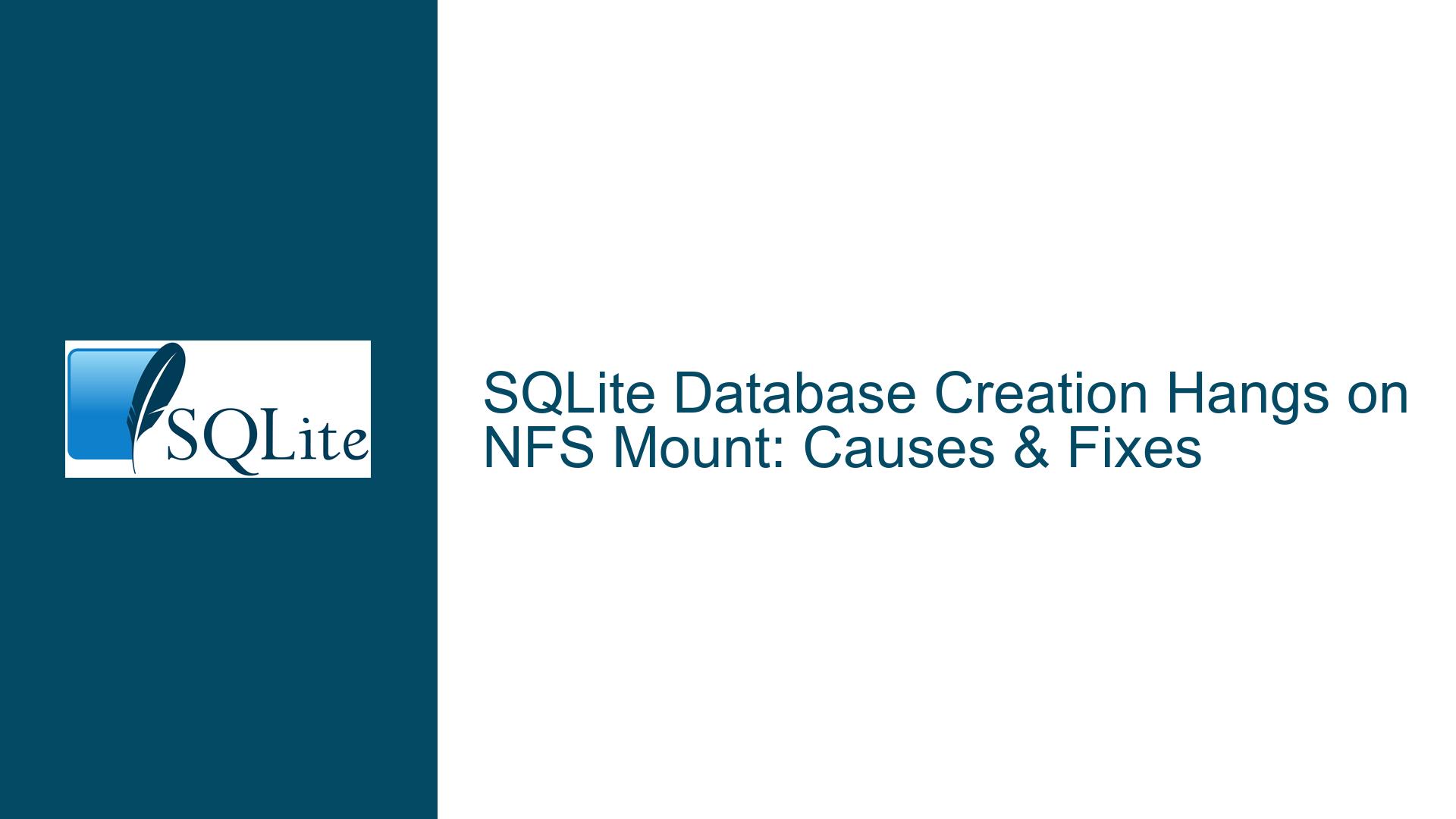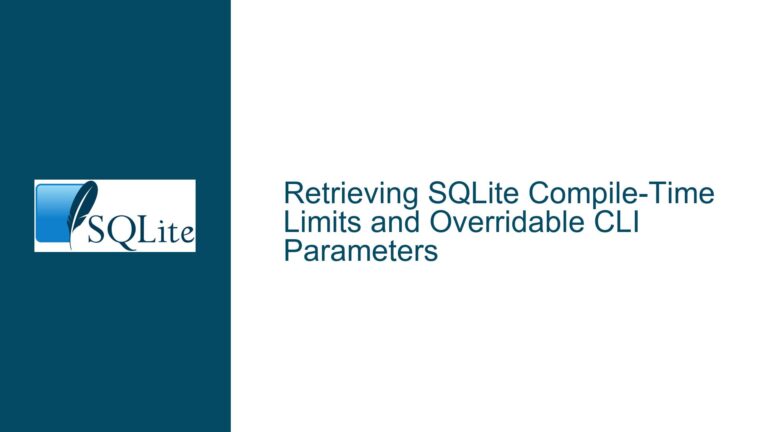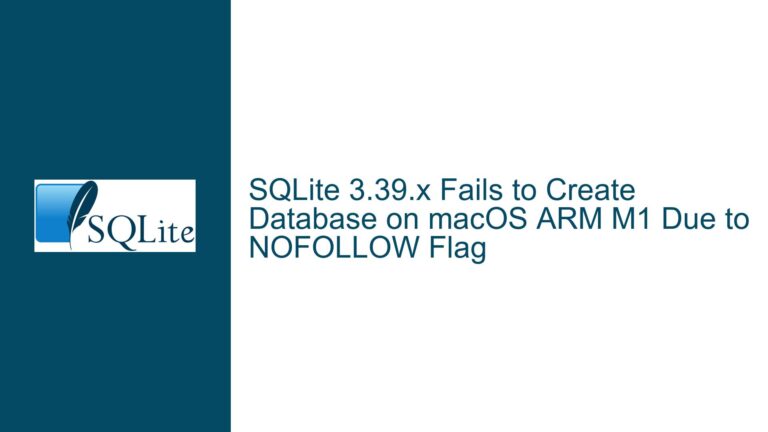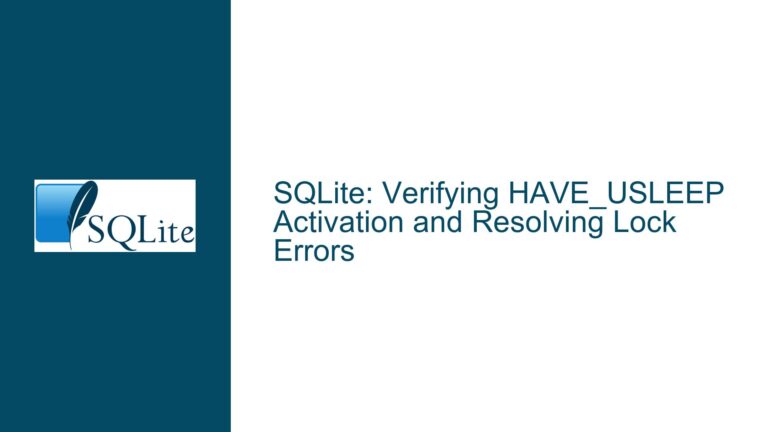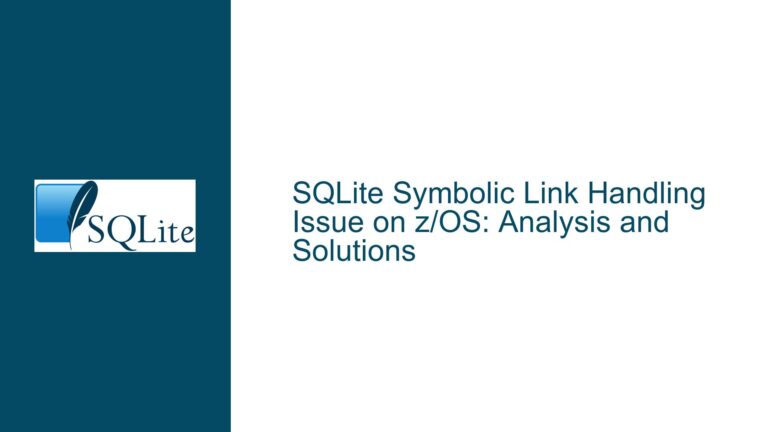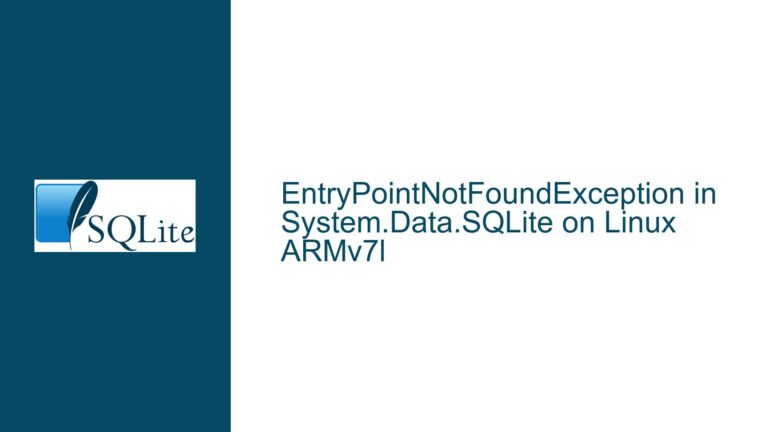SQLite Database Creation Hangs on NFS Mount: Causes & Fixes
Issue Overview: SQLite Hangs When Creating Database on NFSv3 Mount with Default VFS
When attempting to create or access an SQLite database on an NFS (Network File System) mount using the default Unix VFS, the process may hang indefinitely at the sqlite3_exec function call. This issue arises specifically with NFS version 3 (NFSv3) and is resolved when switching to the unix-excl VFS via sqlite3_open_v2. The problem stems from incompatibilities between SQLite’s file-locking mechanisms and the NFS protocol’s implementation of POSIX locks. SQLite relies on advisory file locks to coordinate concurrent access to the database. On local filesystems, these locks are handled predictably by the operating system. However, NFSv3 has historically suffered from unreliable or incomplete lock implementations, leading to scenarios where SQLite cannot acquire or release locks as expected. The unix-excl VFS bypasses granular locking by using an exclusive file lock, which NFSv3 handles more reliably. The hang occurs because the default VFS enters a blocking state while waiting for locks that never materialize due to NFS protocol limitations or misconfigurations.
Possible Causes: NFS Protocol Limitations and Locking Mechanism Failures
The root cause of the hang lies in the interaction between SQLite’s locking requirements and NFSv3’s incomplete support for POSIX advisory locks. SQLite uses a combination of byte-range locks and shared/exclusive file locks to enforce database concurrency rules. On NFSv3, these locks are either not honored correctly or require additional daemons (e.g., rpc.lockd and rpc.statd) to manage lock recovery after network interruptions. If these services are misconfigured or absent, locks may become stuck in an indeterminate state. Furthermore, NFSv3 lacks robust lease mechanisms, making it prone to silent lock revocation under network latency or server reboots. The default Unix VFS assumes reliable lock primitives, which NFSv3 does not provide. This mismatch causes SQLite to block indefinitely while waiting for locks that the filesystem cannot grant. The unix-excl VFS sidesteps this by using an exclusive file lock (via flock or fcntl), which NFSv3 implements more consistently, albeit at the cost of disabling concurrent database access.
Troubleshooting Steps, Solutions & Fixes: Configuring NFS, VFS Selection, and Lock Timeouts
1. Validate NFS Configuration and Locking Services
Begin by verifying that the NFS client and server are configured to support file locking. On Linux, ensure rpc.lockd and rpc.statd are running on both endpoints. Check NFS mount options: using tcp instead of udp and adding vers=4 (if possible) improves reliability. For NFSv3, explicit mount options like lock or nolock control whether the client attempts to use local locking services. Mount the filesystem with mount -t nfs -o vers=3,tcp,lock server:/path /mnt to enforce locking. If the server does not support locking, SQLite will hang because locks are silently ignored.
2. Switch to the unix-excl VFS for Exclusive Locking
The unix-excl VFS avoids byte-range locks by acquiring an exclusive file lock during writes. While this prevents concurrent access, it ensures compatibility with NFSv3. Modify the database connection code to use sqlite3_open_v2 with SQLITE_OPEN_READWRITE | SQLITE_OPEN_CREATE flags and explicitly specify the VFS:
sqlite3_open_v2("/nfs/mount/db.sqlite", &db, SQLITE_OPEN_READWRITE | SQLITE_OPEN_CREATE, "unix-excl");
This forces SQLite to use exclusive locking, which is more likely to succeed on NFSv3. Note that this disables write-ahead logging (WAL) mode and limits the database to a single writer.
3. Set a Busy Timeout to Prevent Hangs
To avoid indefinite blocking, configure a busy timeout using sqlite3_busy_timeout(). This function instructs SQLite to retry locked operations for a specified duration before returning SQLITE_BUSY:
sqlite3_open("/nfs/mount/db.sqlite", &db);
sqlite3_busy_timeout(db, 5000); // Retry for 5 seconds
This is critical for NFS environments where transient lock conflicts are common. Combine this with retry logic in the application layer to handle busy errors gracefully.
4. Upgrade to NFSv4 or Use a Local Filesystem
NFSv4 includes stronger locking semantics and lease-based mechanisms that resolve many flaws in NFSv3. If possible, reconfigure the NFS server and client to use NFSv4. Mount the filesystem with vers=4.2 or higher. For legacy systems where upgrading NFS is impractical, consider storing the database on a local filesystem and synchronizing it to NFS periodically using application-level logic.
5. Monitor and Debug Locks with lslocks and strace
Use system tools like lslocks to inspect active file locks on the NFS mount. Run strace on the hung process to identify which system call is blocking (e.g., fcntl or flock). This helps confirm whether the issue is due to a stuck lock or a missing lock service. For example:
strace -p <PID> -e trace=file,fcntl,flock
Look for hanging calls to fcntl(F_SETLK) or flock(LOCK_EX), which indicate a problem with lock acquisition.
6. Avoid NFS for Write-Intensive Workloads
SQLite’s documentation explicitly warns against using network filesystems due to locking and latency issues. For multi-writer scenarios, prefer a client-server database like PostgreSQL or MySQL. If NFS is mandatory, ensure the database is accessed read-only by multiple clients or use a single-writer architecture with read replicas.
By systematically addressing NFS configuration, VFS selection, and lock timeouts, developers can mitigate hangs and ensure reliable SQLite operation on network filesystems.
